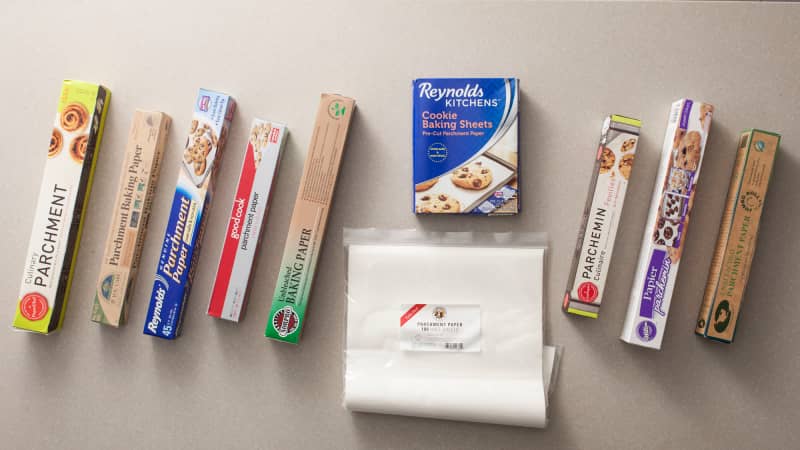Food Storage Bags
Equipment Review
Parchment paper is simple. Why are so many products hard to use?
Published Mar. 1, 2018. Appears in America's Test Kitchen TV Season 21: Bake Sale Favorites

Whenever a piece of restaurant equipment becomes available to home cooks, we take notice. Replacing flimsy jelly roll pans with sturdy rimmed baking sheets changed the way we cook. Using bench scrapers and Y-shaped vegetable peelers made our prep work e efficient. More expensive and esoteric tools, such as high-powered blenders, sous vide machines, and carbon-steel skillets, have also transitioned from restaurant to home kitchens.
Recently, a low-frills restaurant product appeared on supermarket shelves: parchment paper sheets, a precut version of the rolls that we have long used to line baking sheets. Since the sheets are cut to the approximate dimensions of a standard rimmed baking sheet, no trimming is necessary, which saves time and waste. And unlike rolled parchment, which needs to be wrestled out of its box and smoothed, some parchment sheets store completely flat.
Given that not every restaurant product successfully transitions to home kitchens, we were curious but skeptical. How would these new commercially inspired products compare with traditional parchment paper rolls? To find out, we purchased 10 parchment paper products: seven rolls and three packages of precut sheets.
Parchment paper's primary function is to keep food from sticking to baking sheets (although it's handy for lots of other kitchen tasks, too). Happily, all the papers we tested produced cakes, cookies, and pizzas that were evenly baked and that released cleanly. They also performed well outside the oven. None tore under heavy pizzas or pie weights or caught fire in a 500-degree oven. (Even if products list lower maximum temperatures, we've learned from manufacturers that they're still safe to use in a hot oven.) When we sandwiched and rolled out disks of cookie dough between two sheets of each paper, none of them stuck, tore, or crumpled. So we turned our attention to how easy they were to use. In these evaluations, scores were anything but even.
The user-friendliness of the rolls boiled down to two factors: size and cutting mechanism. Most were too wide. The cooking surface of a standard rimmed baking sheet measures 16½ by 11½ inches, yet most rolls were between 13 and 15 inches wide. Positioning them in a baking sheet widthwise left a wide swath of the baking sheet exposed; positioning them lengthwise forced us to trim 1 to 3 inches of paper. On the widest rolls, about 15 inches across, that trimming resulted in 20 percent waste. Only one roll measured 12 inches across, almost the same width as our baking sheets.
We also preferred rolls that were easy to tear into sheets with straight, c...

The mission of America’s Test Kitchen Reviews is to find the best equipment and ingredients for the home cook through rigorous, hands-on testing. We stand behind our winners so much that we even put our seal of approval on them.

Kate is a deputy editor for ATK Reviews. She's a culinary school graduate and former line cook and cheesemonger.

This is a members' feature.